A history of Grand Seiko in ten chapters. Vol.4 The journey to the ultimate in quartz watchmaking
A NEW GENERATION The quartz movement and the advent of the era of high precision
The year was 1969. As well as the mechanical chronograph and the V.F.A. (Very Fine Adjusted) movement, which delivered Seiko’s highest yet level of precision for a mechanical movement, Seiko also released the world's first quartz wristwatch, Quartz Astron, the watch that changed the way the world told time. It was perfectly in tune with its age. This was the era of rapid and dramatic advancements in science and technology which enthralled the public, as illustrated by the worldwide fascination with, for example, Apollo 11's moon landing. The Quartz Astron not only matched the zeitgeist but brought high technology within the reach of all.
Before and after the launch of the Quartz Astron, the goal of ever greater accuracy drove the Seiko team onward. The Quartz Astron was accurate to within ±5 seconds a month and it seemed to be a tough challenge to beat this already high new standard. Thanks to the highly precise vibration rate of the quartz crystal oscillator, the Quartz Aston quartz mechanism could be precise to a second, but the resonance frequency of quartz oscillators varied with temperature so this level of accuracy was not initially achievable in everyday use.
To meet this challenge, the Seiko engineers came up with an ingenious solution. Two quartz oscillators were set alongside each other; one was used to detect the temperature so that variations due to temperature change in the other oscillator could be compensated for. Completed in 1978, this movement, named "Twin quartz," raised the bar once again. The Grand Twin Quartz delivered a precision rate of ±10 seconds a year, and the Seiko Superior Twin Quartz had an even higher degree of accuracy at ±5 seconds a year. The challenge was well and truly met.
A NEW GENERATION The quartz movement and the advent of the era of high precision
The year was 1969. As well as the mechanical chronograph and the V.F.A. (Very Fine Adjusted) movement, which delivered Seiko’s highest yet level of precision for a mechanical movement, Seiko also released the world's first quartz wristwatch, Quartz Astron, the watch that changed the way the world told time. It was perfectly in tune with its age. This was the era of rapid and dramatic advancements in science and technology which enthralled the public, as illustrated by the worldwide fascination with, for example, Apollo 11's moon landing. The Quartz Astron not only matched the zeitgeist but brought high technology within the reach of all.
Before and after the launch of the Quartz Astron, the goal of ever greater accuracy drove the Seiko team onward. The Quartz Astron was accurate to within ±5 seconds a month and it seemed to be a tough challenge to beat this already high new standard. Thanks to the highly precise vibration rate of the quartz crystal oscillator, the Quartz Aston quartz mechanism could be precise to a second, but the resonance frequency of quartz oscillators varied with temperature so this level of accuracy was not initially achievable in everyday use.
To meet this challenge, the Seiko engineers came up with an ingenious solution. Two quartz oscillators were set alongside each other; one was used to detect the temperature so that variations due to temperature change in the other oscillator could be compensated for. Completed in 1978, this movement, named "Twin quartz," raised the bar once again. The Grand Twin Quartz delivered a precision rate of ±10 seconds a year, and the Seiko Superior Twin Quartz had an even higher degree of accuracy at ±5 seconds a year. The challenge was well and truly met.
Read More
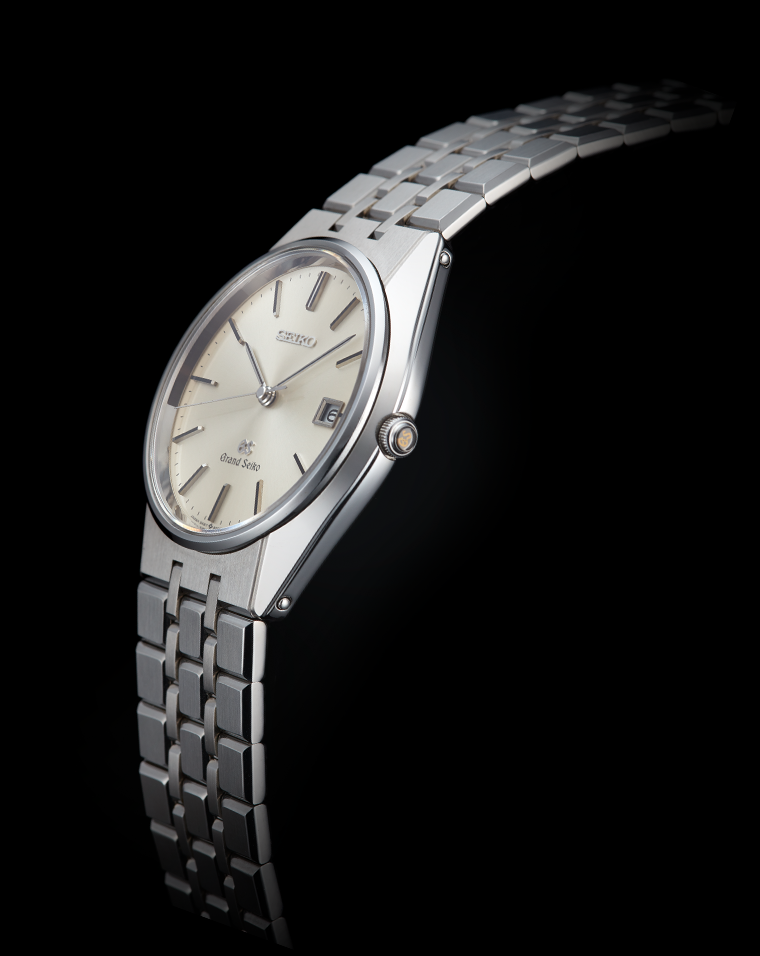
New, longer and narrower hands in a baton shape were created to enhance the legibility of the time. The sides of the thin case were beautifully polished, with the same elegance and sophistication for which Grand Seiko had always been renowned.
The constant development of our
high precision, quartz wristwatches
1974
Seiko Quartz Superior 3883
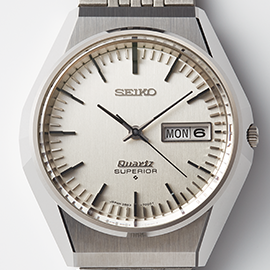
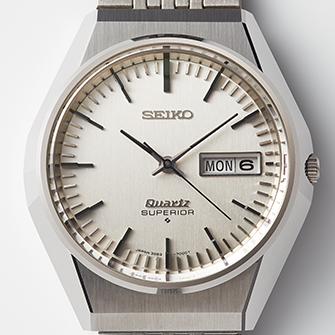
1974
Seiko Quartz Superior
3883
A high-precision model with an average monthly accuracy within ±2 seconds. The oscillating frequency of the quartz crystal was 16,384Hz, half of that today. Battery life was one year. Priced at over 200,000 yen.
1976
Seiko Quartz Superior 4883
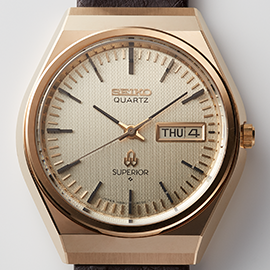
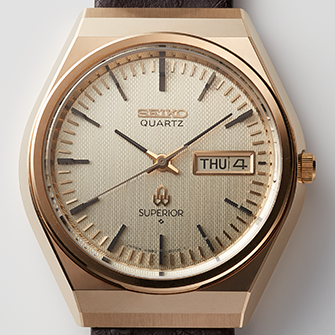
1976
Seiko Quartz Superior
4883
A model launched in 1976, which set a new standard of precision at ±1 second a month. The battery life was extended to more than two years. The oscillating frequency was 32,768 Hz.
1975
Grand Quartz 4843
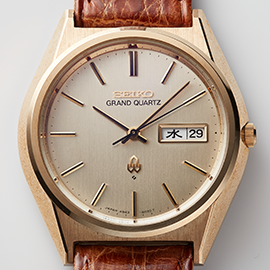
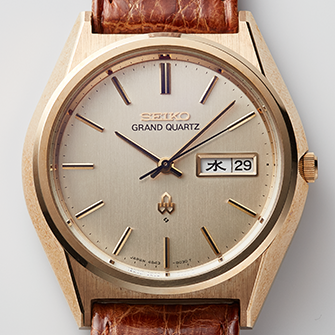
1975
Grand Quartz
4843
The Grand Quartz was released in 1975. Monthly accuracy of ±5 seconds. It had a simple day date, as well as a battery life indicator function.
1978
Grand Twin Quartz 9943
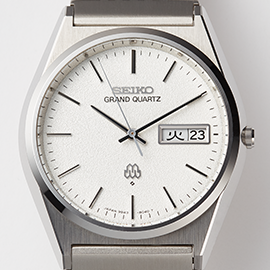
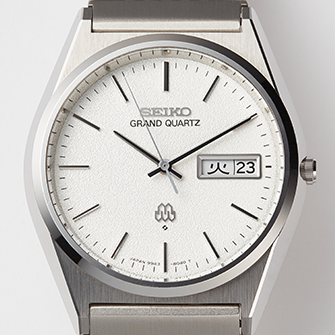
1978
Grand Twin Quartz
9943
An ultra-high precision watch with an annual variation of only ±10 seconds. The double quartz oscillation mark at the 6 o'clock position indicates that this is a twin quartz movement.
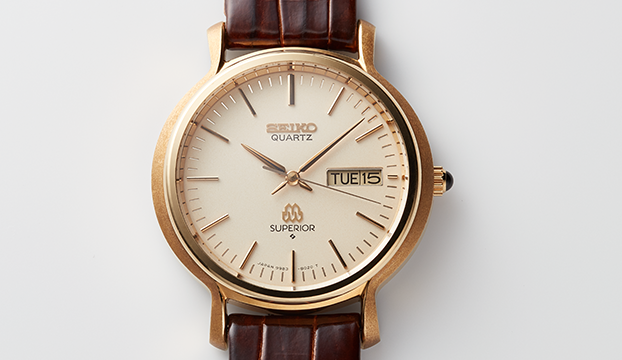
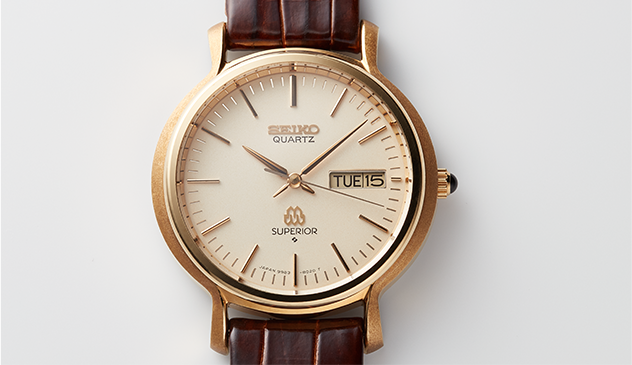
1978
Seiko Superior Twin Quartz 9983
One quartz oscillator was used to control time and a sub-oscillator to sense temperature. By adjusting for variations resulting from temperature change, a high level at ±5 seconds a year was achieved. It also achieved a more compact size, thinner profile, and less power consumption.
Precision of major Seiko quartz movements in the 70s
| King Quartz, etc. | Grand Quartz | Quartz Superior | Quartz Superior | King Twin Quartz | Grand Twin Quartz | Superior Twin Quartz | Other Seiko Quartz | |
| Calibers | King Quartz, etc. 4823, 5856, etc. | 4843 (1975) | 3883 (1974) | 4883 (1976) | 9923 (1979) | 9943 (1978) 9256 (1978) |
9983 (1978) | Other calibers |
| Monthly rate (sec.) | ±10 | ±5 | ±2 | ±1 | ±15、±20 | |||
| Annual rate (sec.) | ±20 | ±10 | ±5 |
| Calibers | Monthly rate (sec.) | Annual rate (sec.) | |
|---|---|---|---|
| King Quartz, etc. | 4823, 5856, etc. | ±10 | |
| Grand Quartz | 4843 (1975) | ±5 | |
| Quartz Superior | 3883 (1974) | ±2 | |
| Quartz Superior | 4883 (1976) | ±1 | |
| King Twin Quartz | 9923 (1979) | ±20 | |
| Grand Twin Quartz | 9943 (1978) 9256 (1978) |
±10 | |
| Superior Twin Quartz | 9983 (1978) | ±5 | |
| Other Seiko Quartz | Other calibers | ±15、±20 |
